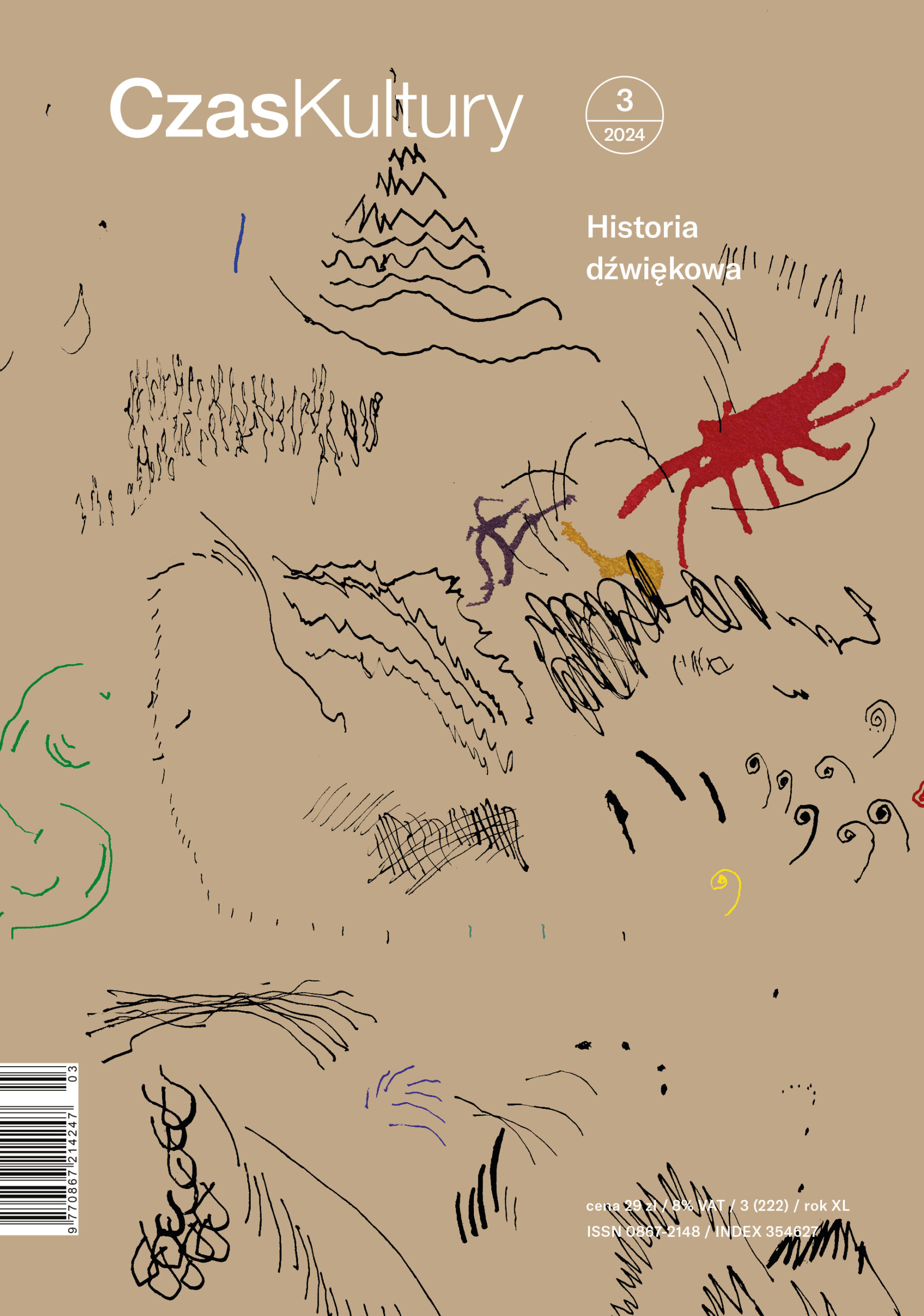vol. XL, no. 3, 2024
Dziedzictwo akustyczne nekrocenu w pieśni godowej reliktowca małego
Filip Szałasek
ORCID: 0000-0003-2556-4120
Zakres stron: 84–100
Abstrakt:
Dziedzictwo akustyczne nekrocenu w pieśni godowej reliktowca małego
Losy reliktowca małego (Moho braccatus), wymarłego niedawno ptaka nazywanego w języku hawajskim Kauaʻi ʻōʻō lub ʻōʻōʻāʻā, to jeden z najbardziej wyraźnych splotów historii człowieka i historii naturalnej. Według relacji pierwszych zachodnich podróżników i badaczy niezwykły śpiew godowy endemicznego gatunku rozbrzmiewał od wybrzeża wyspy Kaua’i po jej najwyższe regiony, by w ciągu niespełna stu lat taksonomicznych badań zupełnie ucichnąć. Nagrania terenowe dwóch ostatnich okazów gatunku, samca i samiczki, zdobyły popularność porównywalną do nagrań pieśni wielorybów zrealizowanych przez doktora Rogera Payne’a w latach 70. XX wieku. Reliktowiec zyskał spore zasięgi na YouTube i Reddicie, trafił do filmu Davida Attenborough, a jego śpiew wykorzystują muzycy i artyści dźwiękowi, jednak charakterystyczne zawołanie ʻōʻō stało się przede wszystkim dźwiękowym symbolem nekrocenu – epoki planowanego wymierania i przewartościowywania tego, co martwe, przez pryzmat nowej wiedzy o ekosystemach oraz ich degradacji.
Słowa kluczowe: antropocen, historia dźwiękowa, nekrocen, nekroornitologia, nagrywanie terenowe
Abstract:
Acoustic Heritage of the Necrocene in the Mating Song of Moho Braccatus
The fate of Moho braccatus, a recently extinct bird called Kauaʻi ʻōʻō or ʻōʻō or ʻōʻāʻā, in the Hawaiian language, is one of the clearest intertwines of human and natural history. According to accounts by early Western travelers and researchers, the unusual mating song of the endemic species resounded from the coast of the island of Kaua’i to its highest regions, only to fall completely silent in less than a century of taxonomic study. Field recordings of the last two representatives of the species, a male and a female, have gained popularity comparable to the recordings of whale songs made by Dr. Roger Payne in the 1970s. Moho braccatus has gained considerable reach on YouTube and Reddit, made its way into a David Attenborough film, and its singing is used by musicians and sound artists, but the distinctive call of ʻōʻō has become primarily a sonic symbol of the Necrocene – an era of planned extinction and reevaluation of what is dead through the lens of new knowledge about ecosystems and their degradation.
Keywords: anthropocene, sound history, Necrocene, necroornithology, field recording
0,00zł



